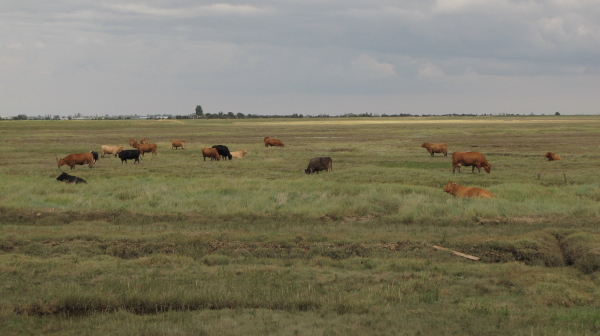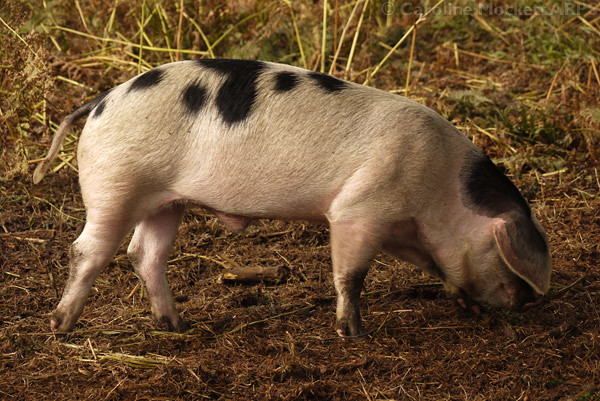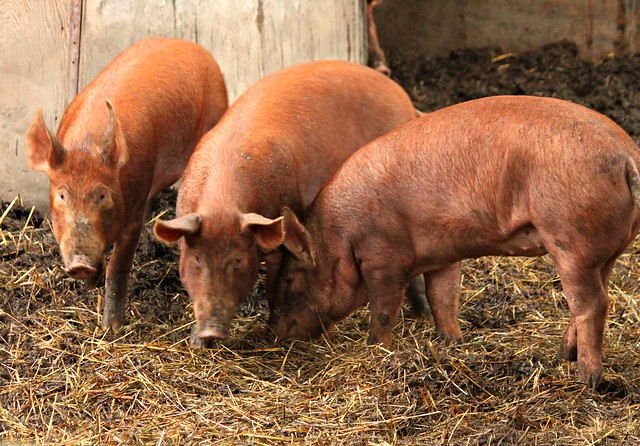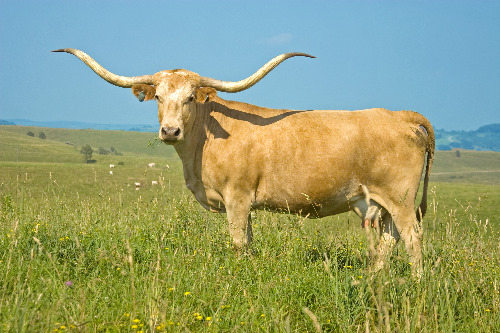Be glad you don't have to deal with a market that is mostly feedlot beef. It's not as healthy as grass fed beef and compared to grass fed beef, it's rather tasteless. Grass fed beef is as healthy as bison to eat (cuts of grass fed bison meat are expensive, but I like it).
A lot of the reason our food industry is the way it is, mass produced, industrial factory style, has a lot to do with WWII. America wound up feeding all of it's own people, a 10 million man military, a large percentage of the troops and civilians of it's allies, the populations of liberated countries, and eventually the conquered Axis countries. They got really good at producing an enormous amount of food fast and economically. The mainstream American food industry, for the most part, just stayed that way after the war.
There isn't a lot of domestic pork grown locally here, so about the closest I come to specialty pork is when I shoot a feral hog. They are epidemic here and as long as you have a general hunting license in Texas, you can shoot an unlimited number 24/7/365. As many as you can kill, you can keep. No tags required.
Sometimes I don't have to shoot them myself. I have a friend who has a contract to keep the local airport clear of feral hogs, so sometimes I'll get a call at 2am. Otherwise he just deposits them at the county landfill for burial with the rest of the trash.
The feral hogs here are a mix of domestic hogs originally brought over by English, German, French, and Spanish settlers. In the 19th Century wild boars from Germany were released into the countryside, and they then mixed in with the feral hog population. In the early 20th Century they did the same with the Russian wild boar. So, the feral hogs here are a mix of all of that.
Some of them get big. I saw one dead alongside the road a few months ago on my way back from Victoria and from a distance it looked initially like a cow had gotten hit. As I got closer I noticed the odd shaped head for a cow and the stubbier legs. He was pretty bloated from being dead. I should have stopped and took a photo but I was in a hurry. You don't normally find them that large, but it does happen occasionally. They can get mean sometimes. One nickname for the American feral hog is the "poor man's grizzly".
I'm not normally too picky on the cows I buy as per breed when I'm shopping for one for the freezer. Because of the somewhat wet, bug infested, semi-tropical climate, I'm primarily concerned as to how healthy the cow is first and foremost. I typically wind up buying a Hereford or an Angus. The Coastal Bend area of Texas (the region which the city of Corpus Christi is in, the easiest way to locate the area on the map) is right at about the same latitude as central Florida, which is about the same latitude as the Canary Islands, central Algeria, and Delhi, India. So the climate is somewhat warm much of the year, and being near sea level, close to the ocean on land that can get swampy at times, disease and parasites can be a concern with both livestock and wild game.
Most of the cows available from the local farmers are Herefords and Angus, which are pretty much the most common breeds of beef cattle in the USA, plus a number of local farmers grow Brahmans, which evidently do well in the local climate.
According to the numbers I have seen, Angus is actually the #1 most common breed of beef cattle in the USA, making up about 60% of the US cattle herd. It was first brought over from Scotland in 1873. The Hereford was first brought over from Herefordshire, England in 1817.
The American Brahman is the first cattle breed that was developed solely in the USA. It's a mix of four different Indian cattle breeds: Gyr, Gujarat, Nelore, and Krishna Valley. They are known for being heat tolerant and having thick hides that resists insects.
Oddly, you don't see too many of the iconic Texas Longhorn cattle locally. They are the direct descendants from the first cattle brought into the New World by the Spanish, shortly after their conquest of Mexico. They are a mix of three different cattle breeds from Spain that mixed together in Spanish Colonial America and adapted to the harsh, dry climate of the interior.
Hereford
American Brahman
Angus
Texas Longhorn
This is a typical American feedlot. The vast majority of cattle intended for slaughter and meat production in the USA come from places like this. The cows cannot move around much and a truck periodically passes down the endless feed trough, filling it with a feed mix made mostly of grain. They have to give the cows a lot of antibiotics due to the naturally unhealthy nature of the feedlot. As you can see, they are living on ground that is almost totally covered in a layer of their own manure turned into muck with their urine. The inactivity plus the grain diet causes the cows to pack on a lot of weight, increasing their value on the market. The grain diet changes the nutritional quality, taste, and fat distribution in the meat, and not for the better.

A typical American feedlot is rather large. The 'pond' which is partially visible to the left is a lake of urine and manure run off from the feedlot. These waste ponds next to feedlots and the larger indoor mass pig growing operations can sometimes be up to square mile in size (about 259 hectares).
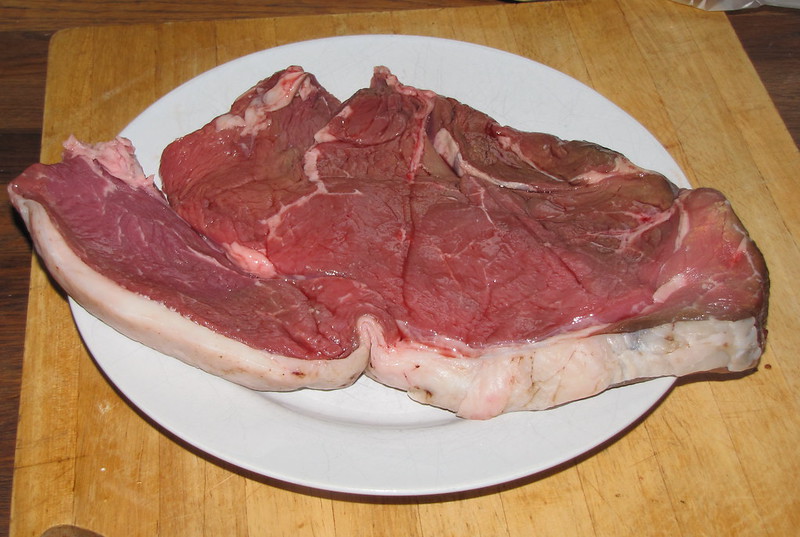 Rump steak by British Red, on Flickr
Rump steak by British Red, on Flickr

